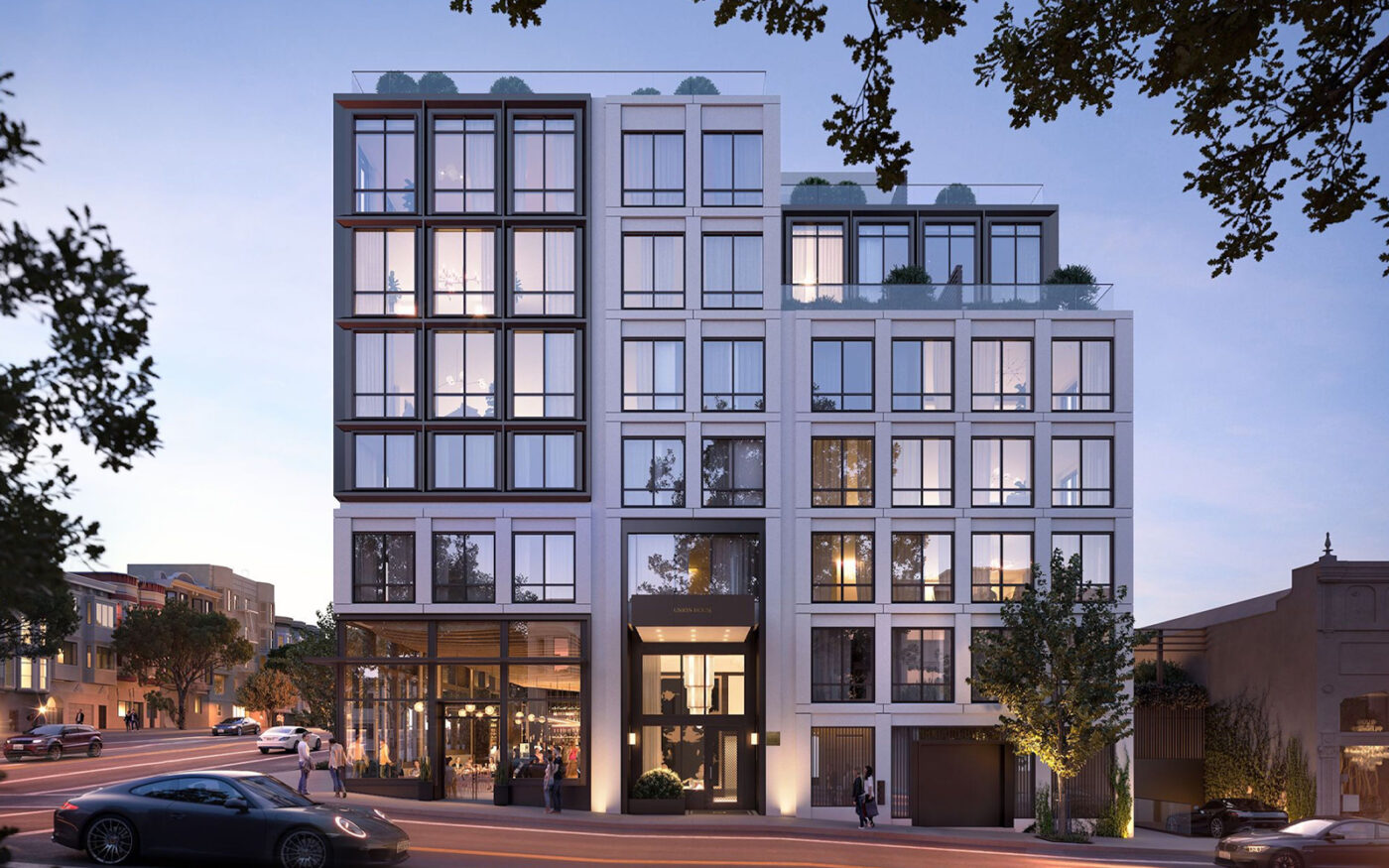Condo developers in San Francisco are getting creative in order to close deals, especially downtown, as the city’s record office vacancy rate — compounded by inflation, interest rates and economic fears — have caused more buyers to pull back. But as rates begin to trend downward again and mortgage initiations and open house numbers slowly climb, agents say the bargain hunt may be coming to an end.
At Tishman Speyer’s 40-story MIRA project, incentives over the past year have been based on what resonated most with buyers, according to Matt Felt at Polaris Pacific, which handles sales at the 392-unit property. Early in 2022, concessions leaned toward designer upgrades, with some assistance on HOA fees.
This combination was “most effective at converting sales as consumers saw benefits in enhancing their new homes with some mild relief in monthly payments,” Felt said.
But as the year went on and interest rates doubled, nominal relief was no longer enough. Buyers’ focus shifted from upgraded flooring and countertops to lowering their monthly costs. Tishman responded to the change by offering to cover more HOA dues, which at MIRA run about $1,400 a month for a two-bedroom, two-bath condo, according to MLS data, as well as closing costs such as transfer and property taxes.
“Incentives have increased, and now most buyers use a significant portion of these credits to buy down their short-term or long-term interest rates,” Felt said.
Buying down the interest rate for a 30-year-fixed loan typically costs 1 percent of the loan for each quarter-point reduction, according to Rocket Mortgage. For a median-priced $1.15 million San Francisco condo with 20 percent down, it would cost $9,200 to bring the rate down a quarter point, saving the borrower a few hundred dollars each month. The bigger the buy-down, the bigger the savings.
Bring us your buyers
Felt said that incentive packages for the 40 remaining condos in the twisting tower in the city’s East Cut neighborhood are unique to each offering.
Most developers aren’t advertising their specific incentives, said Compass’ Andy Ardila, revealing them only when they have a buyer at the table. But the message he’s hearing is clear: Bring in your buyers and we’ll talk — even if the starting offer is 20 percent below the listing price.
“They’re not really showing their cards,” Ardila said. “You start low, and then you go back and forth and ultimately end up in a win-win situation.”
Buyer incentives could add up to savings of 15 percent off the list price, “if you’re getting really aggressive,” though discounts of about half that are more common.
Ardila said that a price cut is the most successful way to catch buyers’ attention, but most developers would rather be part of these behind-the-scenes negotiations than publicly drop the price. More than 40 percent of sellers were giving concessions to buyers at the negotiating table in the last quarter of 2022, he said, citing Compass’ own data — a 10-year high.
“Developers typically want to keep their price reductions to a minimum,” he said. “They want the higher price per square foot, and they want to hold steady for comps within the building. So offering incentives, like HOA dues or closing costs, that don’t appear in the public record on the MLS is more favorable to them.”
“Incentives have increased and now most buyers use a significant portion of these credits to buy down their short-term or long-term interest rates.”
Matt Felt, Polaris Pacific
Some developers are also offering incentives to agents who bring them multiple deals, Ardila said, in a sort of building-specific loyalty program. On the first sale, for example, the agent could get 2.5 percent. But the commission steps up to 2.75 percent on the second sale and 3 percent on the third, said Ardila, a strategy he’s seen used in down markets before.
Ardila works with buyers who are typically looking in the $2 to $4 million range. However, ultra-luxury buyers are also hunting for bargains, even if they don’t need to worry about monthly payments, said Krysen Heathwood of Compass’ development marketing group.
“Each buyer has their hot points,” she said. “The high-end buyer does have different needs, or different hot buttons, but they don’t want to overpay either.”
Waking from a slumber
Heathwood said that the condo market at all price points was “frozen” in the city from midsummer until December, with sales slowing to a near standstill. But in December and January, buyers “came out of hibernation” with deals at such high-end buildings as 181 Fremont, The Harrison, Yerba Buena Island and Union House, she said.
“I wouldn’t say it’s improved, but it is improving,” Heathwood said. “Buyers still want the same house, even though their buying power has come down. So they’re going to find a way to get the price they need to get the home that they want.”
Yerba Buena Island and Union House are well outside the downtown core, where much of the new condo supply has been concentrated and where most office buildings have been half-full at best as workers continue to embrace a hybrid work week.
Heathwood said she can’t draw a direct line between remote work and the sales slowdown, but it’s her belief that “if we can get more people back to the office, it will create a better energy within San Francisco, and therefore people will have more confidence and likely will be more willing to buy condos.”
Ardila leads the sales team at DM Development’s Union House and said the 41-unit boutique building between Pacific Heights and Russian Hill is not currently offering any incentives, although it has seen some price reductions.
In mid-January, the building had only 10 units left, with three closings in December and one unit that closed in January for $6 million, or about $2,500 per square foot. Other units have closed at $3,000 a foot, he said, among the highest per square foot paid for condos last year, when many downtown condos were trading at about half that.
Ardila said buyers probably have only a few months left to take advantage of the incentive packages being offered by developers, citing a 25 percent increase in weekly mortgage applications, lower interest rates and higher turnout at open houses. Compass data show the percentage of San Francisco condos, co-ops and tenancies-in-common going into contract was up across all price points in January.
“The buyers that stepped back from the market in late 2022 are not going to be able to stay away forever,” he said, adding that first-time homebuyers and retirees looking to downsize are two of the most active buyer pools.
One of Ardila’s recent buyers was an empty-nester couple. When they found the condo they wanted, they didn’t negotiate at all, he said, and they paid the list price. Ardila described the buyers as “super happy” to get the property with less competition and added contingencies that made them feel more comfortable, instead of dealing with the overbidding free-for-all that was the norm in the city before the recent downturn.
It’s an indication that many buyers may be through with bargain hunting and ready to make moves now that we’re in a “more balanced market,” he said.
“For people to get into this buyer’s market, I think now’s the time to act,” he said.




